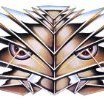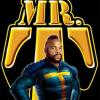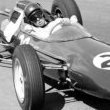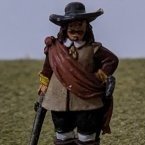-
Posts
156 -
Joined
-
Last visited
-
Days Won
1
SarmaT last won the day on April 13 2023
SarmaT had the most liked content!
About SarmaT
- Birthday 17/01/1971
Profile Information
-
Gender
Male
-
Location
Kyiv, Ukraine
-
Interests
military aviation 1/72, Warhammer miniatures, AFV
Recent Profile Visitors
747 profile views
SarmaT's Achievements

New Member (2/9)
757
Reputation
-
Formula 1 build - missed the opportunity to follow it from the beginning. The IP rear wires look a little bit thick to me) It seems like the lights on both wings look greenish? Have you chosen the camouflage scheme yet?
-
Hi everyone! UPD on Horten. The airframe is glued together. The p/e kit suggests twisting two tubes - a very sad imitation of engines. Actually, there's no need in those pipes and they don’t look like engines either. But if not to put them there at all, the front wheel well looks completely empty. I decided to make them, since such a detail exists. In general, based on this logic, absolutely any tubes could be glued there. The lower plate (floor) of the cockpit, which doesn't really exist in the real prototype, is puttied, since it will be very visible. I glued, after painting, the kit beams in the front wheel well area, the partitions between the fuselage and wings, and the cannons. I decided to make some additions in this well, otherwise it looks completely bare. I extended the cable bundles from the cockpit, made some beams - elements of the frame inside from extruded sprue. The crosshair under the cockpit floor in the front wheel strut area is proposed to be photo-etched, but it looks absolutely ridiculous there. I also made it from the extruded sprue. I painted and glued the rear elements of the engines. Glued the upper and lower halves of the fuselage together. In the landing gear wells I added some “pipes” to the existing ones. On the upper part of the fuselage behind the engines I painted the surfaces with “aluminium”. I put some weight in the front part of the fuselage. Masked the inside of the engines at the front, painted in aluminum.
-
I've made an imitation of “voltmeter” and switches. To tell the truth, the device didn't turn out to be as contrast as I wanted it be. Although I used a bit from the p/e part from instrumental panel. And I also failed to hide the wires - it was too risky - didn't want to break the whole detail. The thing is that later I realised that this device in the museum is a little bit broken and originally looked different. First picture shows like now I think it should be and the second - what I've got eventually. The instrumental panel from the p/e kit appeared to be oversized - I could barely fit it in. I had to cut off some part of it. But overall it still looks better than the decal. So I reckon that the work on the cockpit at this stage could be considered completed. I will install the pilot's seat at the end not to tear off the headrest.
-
I use the same method. Actually everything depends on the drill's diameter. In the end of the day you can do a small hole with a needle as well.
- 556 replies
-
- 5
-

-

-
- Ventura
- Restoration
-
(and 1 more)
Tagged with:
-
Very soon I will have to make such a df loop on Horten myself , and the closer I get to this date, the more I think whether I was too categorical and demanding to my colleagues. As for the gun ports it is very familiar when did you consider the self-adhesive folie? And also the shape of these ports remind me the edges of holes for rigging at the WWI airplanes' fuselages. There're p/e parts for it. Something like this (right bottom corner): Also another method for making gun ports comes to my mind: to make a kind of oval plastic tube and slice it like a sausage. Or extruded plastic rode of necessary shape being sliced and then drill holes inside of these slices. Sorry, not sure whether I succeded to explain.
- 556 replies
-
- 1
-

-
- Ventura
- Restoration
-
(and 1 more)
Tagged with:
-
Cut the left side and a 2mm strip off the pilot's seat - made the pilot's seat narrower. Tried it on with beams on the sides - it fits. I glued the side part of the seat back and glued the pe safety belts, made a headrest and “supports” for the legs (tell me what they’re called correctly). Painted the seat and cockpit.
-
I followed the construction of this model with a great pleasure, but its presentation is amazing: probably this is the ultimate and the most comprehensive instruction for building not just a 1/72 scale model, but a real aircraft. The assembly description is a masterpiece itself! The model is fabulous, but you made it perfect with your addons. Looking at this Flogger and reading reviews of the modellers from all over the world, a feeling of pride for Ukraine overwhelms me. Congratulations, Dmitry, this is an extremly high level job!
- 39 replies
-
- 1
-

-
- 1/72
- Clear Prop Models
-
(and 1 more)
Tagged with:
-
Very true but still it was worth trying - some back side of ip will be seen through front immovable part of the canopy.
-
Hello everybody! Some dvancement with Horten. I made some movement control levers, some kind of device with cables for the portside truss beams. And tried on dry both beams with the pilot's seat from the kit. I glued instrument cylinders from extruded sprues to the back wall of the instrument panel and ran a cable to them. The cable was gathered into a bundle using an extruded earwig. I also laid out a beam for the aircraft's rudder and imitated pedals.
-
A small progress: I've added some plastic to the side walls of the cockpit up to the instrument panel. On the beams on the starboard side I've made an imitation of some kind of device and a lever (at the picture in comparison with a kit part). I've started the pe plate and bent the pilot's seat (I haven't soldered or glued it yet). It turned out to be too wide to fit with the framework beams on the sides with all the devices and cables (it's wider than the chair from the kit). The pe manufacturer Eduard suggests to cut off the walls of the cockpit (as it actually should be), but I didn’t dare to go that far. I think I'll make the pe chair narrower.
-

Gloster E28/39 Pioneer, 1/72, Clear Prop Models
SarmaT replied to SarmaT's topic in Work in Progress - Aircraft
Thanks, Charlie! I recon it's worth every penny -
Hello everybody! While the work on the Gloster Pioneer is heading to its completion, I want to open another construction project that will expand my "Dawn of Jet Aviation" collection and this aircraft could be a wonderful addition to the Me-163 Komet which is already on the shelf. The kit is quite familiar to many of you)) As always, my task is to learn to assemble and paint models accurately, so forgive me if I disappoint someone: no global reconstructions. I won't adjust the geometry of the plastic - this model may not look like a real prototype, but it definately doesn't look like Bf-109. I plan to open the canopy (the manufacturer provides this option). By chance, I happened to have a plate of Eduard p/e for this model - it will provide the instrument panel and a pilot's seat with belts. And also plan to decorate the cockpit a little bit. As for the design, I really want to make a version with the image of Baron Munchausen, so it's going to be the 400 Jagdgeschwader. For certain reasons, I am inclined to the 74/75/76 scheme provided by the manufacturer, however, with a slight deviation from the standard scheme in the form of RLM76 overlapping the upper camouflage. Here some ideas how it might look like:
-

Gloster E28/39 Pioneer, 1/72, Clear Prop Models
SarmaT replied to SarmaT's topic in Work in Progress - Aircraft
Thanks, Chris! -

Gloster E28/39 Pioneer, 1/72, Clear Prop Models
SarmaT replied to SarmaT's topic in Work in Progress - Aircraft
Took the masks off the canopy. The result is very good - no leaks anywhere. And I don’t regret a single bit that I installed the vacuum form canopy - it's seen through it more than I expected! Now looking forward to photo session to make proper pics -

1/72 ClearProp Mig-23MLA Czechoslovakia - “Finished”
SarmaT replied to dimaADA's topic in Work in Progress - Aircraft
That is exremely difficult stage of work: firstly the detailes - all these lights and antennas - are very small and secondly you have to be really carefull not to ruin the previous work. But effect is outstanding - the model looks very realistic!- 143 replies
-
- 1
-

-
- 1/72
- Clearprop Models
-
(and 1 more)
Tagged with:






